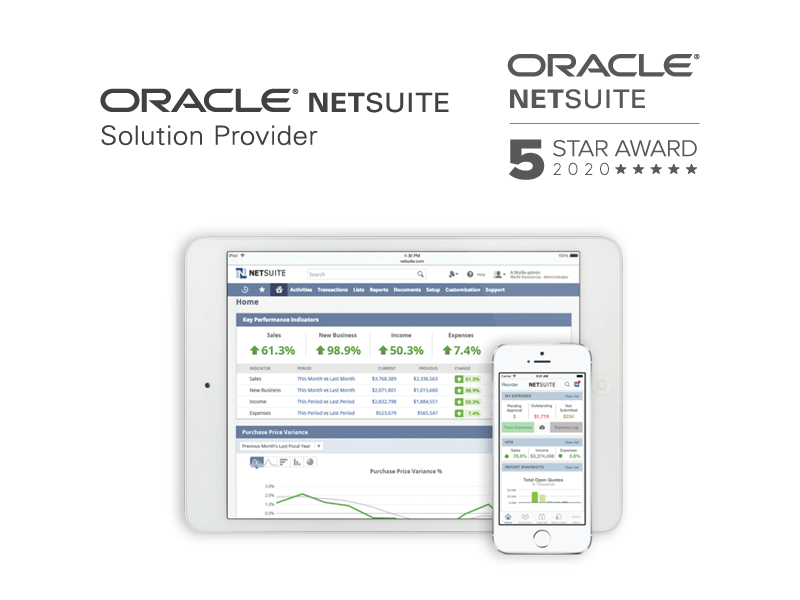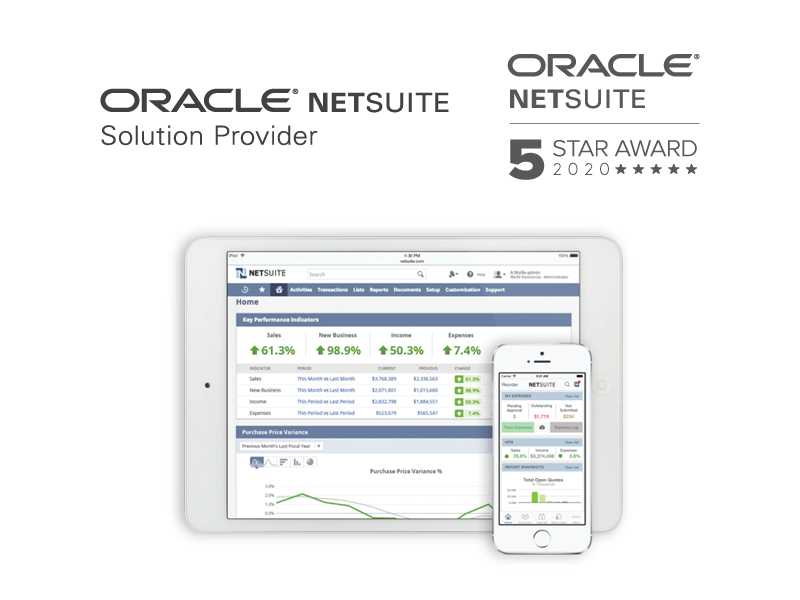NetSuite Manufacturing Supply Chain Enhancements
NetSuite Manufacturing Supply Chain Enables Agility and Better Business Continuity If you're like most manufacturers recently, you've experienced...
2 min read
Adrian Montgomery Jun 9, 2020 11:18:32 AM

Manufacturers are managing a tricky balancing act of holding enough inventory, so they aren’t facing a depleted supply chain, but not so much that they tie up cash. With NetSuite, your manufacturing supply chain is constantly monitored so you can navigate disruptions and focus on continuous improvement.
What are the steps manufacturing companies like yours can take now to be prepared to respond rather than react to potential supply chain disruptions? How can your company avoid costly and unnecessary customer dissatisfaction caused by backorders that delay shipments?
Companies across multiple industries are assessing the state of their business, determining what’s working, what’s not working, and looking for areas of opportunity. For manufacturing businesses, COVID-19 put a spotlight on gaps in supply chain management—many of these existed before and were further compounded during the global tariff wars over the past few years.
In order to eliminate inefficiencies and prepare the business for what’s ahead, manufacturers must assess their supply chain for risk. This audit should include every single vendor and supplier, how their inventory is managed, and ecommerce capabilities.
Mandatory closings for non-essential businesses caused chaos for many manufacturers, forcing furloughs. Supply chain disruptions have made life difficult even for those allowed to remain in operation. All business leaders are keeping a close eye on cash, and suppliers are a key opportunity for manufacturers to keep an eye on cash flow efforts.
Manufacturers need to spend time evaluating vendors and seeking out strategic sourcing, particularly if they are in single or sole sourcing positions. Many manufacturers are looking into second- and third-level suppliers to avoid future supply chain disruptions, but now have the additional constraint of finding suppliers that are both reliable and cost-efficient.
“Supply chain redundancy techniques are effective in maintaining efficiency and keeping your most vital items moving but come at a cost,” said Gavin Davidson, product marketing director at NetSuite with 35 years in the manufacturing industry. “Make sure to only use them at the most critical points of your supply chain. You need to weigh the risks and costs of those new suppliers and model multiple scenarios of their budget impact.”
It’s important to make sure you prioritize the areas to identify backup supply. In most cases, you should start by reviewing the bill of materials to identify critical points of supply and find alternate sources for those at highest risk.
“Manufacturers should look to identify the top 3–6 suppliers that make up the largest portion of their spend and then evaluate and mitigate any risk involved in maintaining those suppliers as single or sole sources,” said Matt Wisner, industry principal for NetSuite’s Manufacturing Center of Excellence. “One mitigation strategy many manufacturing firms are now evaluating is vertically integrating these suppliers by adding the capability to their operations or even looking at a possible acquisition.”
Instituting a contingency plan will reduce the risk of scrambling to find additional suppliers, many of which will be unable to fulfill your orders during the next supply chain disruption. These plans should include factoring in the timeliness of communication, ability to monitor inventory levels, and flexibility of logistics for each supplier. The most agile companies use cloud manufacturing software like NetSuite to easily and automatically monitor and manage inventory levels. This automation means that you’ll be actively notified when inventory levels or supply chain delays put orders and ship dates in jeopardy.

Considering supply chain management as a whole, executing your new plan is probably the most important phase; and in a global economy, it can also be the most complex. Trust the experts at Blytheco to guide you to success. As a 5-star NetSuite partner, Blytheco is here to help you transform your manufacturing business with NetSuite. To see a demo of NetSuite or speak with their team, call 949.583.9500 today!

NetSuite Manufacturing Supply Chain Enables Agility and Better Business Continuity If you're like most manufacturers recently, you've experienced...

Tame the Supply Chain Beast with NetSuite for Manufacturing and Production Making sure your supply chain software is tuned to help you make the right...

NetSuite for Manufacturing with Outsourced Manufacturing NetSuite for manufacturing enhancements builds on improvements in both visibility and...